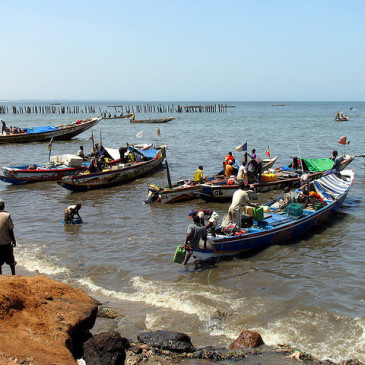This is the fourth story in the Windows on Resilience series produced by CDKN and the Resilience Knowledge Coalition for the COP26 Resilience Hub – a physical and virtual space at COP26 dedicated to sharing best practice and building collaboration, momentum and new opportunities on adaptation and resilience. This story series shares practical and inspiring resilience solutions from communities and countries around the globe. Register for the Resilience Hub here.
Deltas and coastal areas around the world are facing the worst effects of global warming. These effects include sea-level rise, changing weather patterns, extreme weather conditions, soil subsidence and endangered biodiversity. Societies need to commit their energy and investments in climate change adaptation, in addition to preventing further global warming. This is particularly true for societies with densely-populated delta areas concentrated with infrastructure and utilities, which often are important economic centres that provide jobs and prosperity.
The latest IPCC report AR6 Climate Change 2020: The Physical Science Basis highlights that coastal urban deltas and low-lying island states are the most vulnerable to climate change. In fact, some are slowly sinking, and/or coping with rising sea levels. Emerging economies in Asia are expected to bear the larger burden related to sea-level rise, together with other regions in the global South such as the South Pacific Islands, West Africa, as well as Western Europe and the Southeast Coast of the USA. The implementation of effective coastal and river defences is crucial for the protection of a significant share of our global population as, according to the United Nations, more than 600 million people (around 10% of the world’s population) live in coastal areas that are less than 10 metres above sea level. Nearly 2.4 billion people (or 40% of the world’s population) live within 100 kilometres (60 miles) of the coast.
Planning tools for long-term resilience
Coastal protection at such a scale requires an exceptional effort on the part of all stakeholders concerned, including financiers, insurers, governmental policy-makers, landowners, private companies, NGOs and local communities. To push climate adaptation higher up the political agenda, Dutch maritime company Van Oord developed the Climate Risk Overview, which digitally zooms in on global coastlines using public source data. This open-access tool, also shared with the Global Center on Adaptation (GCA), can be used to highlight global hot spots as priority coastal areas at risk. The tool is meant for policy-makers and marine engineering companies to develop long-term resilience plans in Africa, Asia and the Caribbean.
Government leaders know they have to act now. History teaches us over and over again that proactive planning and investing in coastal defence infrastructure always pays back in the long run. Investing in coastal resilience not only protects assets and infrastructure, it has a direct impact on the wellbeing of millions of people living and working there.
Nature-based solutions unlock development and financial benefits
A range of coastal defence solutions exists from solid or grey to nature-based. We call for proactive coastal resilience adaptation planning, the integration of nature-based solutions and innovative financing. We want to build inclusive partnerships that focus on replicating and scaling existing nature-based solutions to contribute to a more resilient world. In The Netherlands, Indonesia, Maldives, Senegal and other vulnerable countries, coastal-resilience solutions have been implemented using sand motors, mangroves, coral-reef restoration and beach breakers, generating multiple benefits. For example, the six kilometres of sand dunes constructed to strengthen a weak defence in the northwest of The Netherlands were estimated to yield more than 100 million euros of additional benefits from nature and tourism over a traditional grey solution. With the aid of the EcoShape Foundation for Building with Nature, the project was optimised and is still being monitored for learning and improving future project designs.
In 2019, the World Bank concluded from a study as part of the West Africa Coastal Areas Management Program (WACA), that especially in Senegal the costs of coastal degradation from erosion and flooding are high (7.6% of the Gross Domestic Product) because high-value urban land is lost due to erosion. Therefore, the World Bank invested in a coast reclamation project at Saly, Senegal, which included the construction of 12 breakwaters and restoration of 4,5 kilometres of sandy beaches. The project was estimated to yield a net positive benefit of around 37 million euros from the return of tourists, fishing, local employment and education. Priceless were the views of children playing on a beach for the first time in their lives, despite living in a coastal zone.
Join us at COP26
Scaling such valuable solutions globally requires a fundamental look at how we plan for resilience as nations and society. The Resilience Hub at COP26 will explore this very issue of ambitions on resilience and actions at scale. Non-state actors from businesses, the investment community, civil society, academia, cities and regions will come together virtually and in-person to highlight the urgency for climate adaptation action to create a resilient world for all. Register today to take part.
Van Oord will be there to raise the importance of active collaboration and the usage of nature-based solutions to accelerate coastal resilience around the world. Van Oord and Ocean Risk and Resilience Action Alliance (ORRAA) will co-host a session at the Resilience Hub on November 8, 12.00 – 13.30 GMT. Please join us online by registering here.
Join us; share your thoughts with us on this quest for a more resilient world for current and future generations on www.vanoord.com/sustainability.
